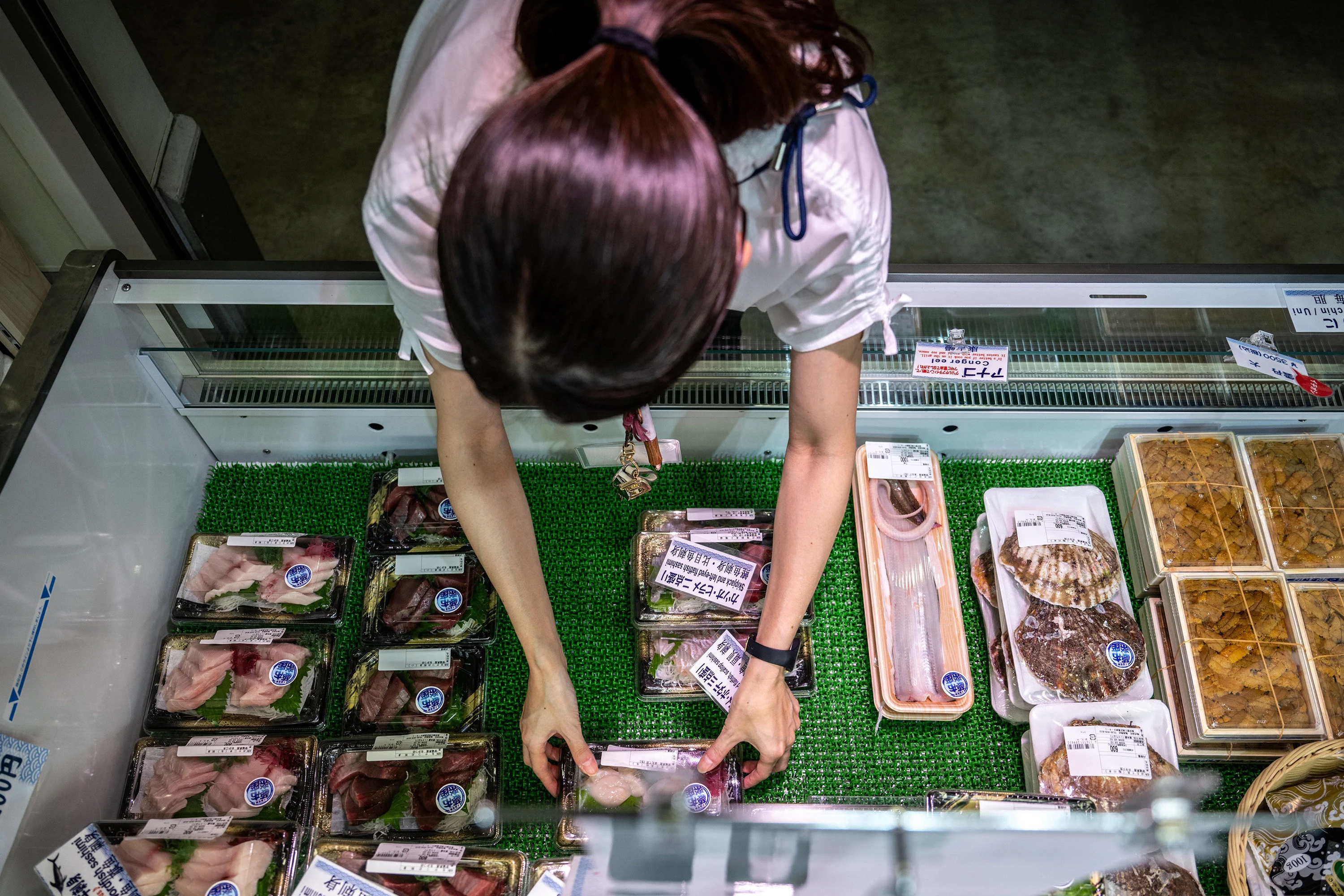China has partially lifted its two-year ban on Japanese seafood imports in the latest step by Beijing to remove a diplomatic roadblock that has strained ties between the two neighbours.
According to a Chinese customs notice issued on Sunday, shipments of seafood originating from “certain regions” of Japan would resume “conditionally” with immediate effect.
The decision was made “under the premise of ongoing long-term international monitoring and independent Chinese sampling of Japan’s Fukushima nuclear-contaminated water discharge with no abnormalities found, and Japan’s commitment to ensuring the quality and safety of aquatic products exported to China”, the notice said.
The measure, which covers imports of aquatic products including edible aquatic animals, will not apply to 10 Japanese prefectures, including Fukushima, Gunma, Tochigi, Ibaraki, Miyagi, Niigata, Nagano, Saitama, Tokyo and Chiba.
Beijing suspended food imports from those areas in July 2023 – before Japan began releasing treated waste water from its damaged Fukushima nuclear power plant, despite strong opposition from Chinese authorities.
Beijing extended the prohibition about one month later, imposing a full import ban on all Japanese seafood.
The latest easing, though limited in scope, comes as Beijing bids to reset ties with its East Asian neighbour amid growing US trade uncertainty.
Last month, Tokyo said that the two sides had agreed on technical conditions for the resumption of seafood shipments to China, while Chinese customs confirmed “substantial progress” in the latest round of bilateral technical exchanges.
Similar talks were held in early May, April and March, in which Chinese negotiators repeatedly noted the same criteria for the resumption of Japanese seafood imports, according to statements by Beijing.
The requirements were “the Chinese side’s continued independent sampling and monitoring of a series of scientific data and the Japanese side’s effective measures to ensure the quality and safety” of the products.
Last September, following an agreement with Tokyo to expand monitoring of the treated water, Beijing agreed in principle to gradually resume some imports.
In its announcement of the latest easing, Chinese customs said that it would continue to strictly regulate Japanese seafood imports.
“If any products are found to be non-compliant with China’s relevant laws, regulations and food safety standards, or if the Japanese side fails to effectively fulfil its official supervisory responsibilities, timely control measures will be taken to effectively protect the health and safety of the Chinese people,” it said.
China was one of the biggest markets for Japanese seafood before the ban, which put further strain on relations between the two neighbours – already at odds over historical and territorial disputes as well as Beijing’s military assertiveness in the region.
The tensions between Asia’s two largest economies intensified during the previous US administration under Joe Biden, as Washington stepped up efforts to rally its Indo-Pacific allies into a united front against China in areas such as economics, security and technology.
But President Donald Trump’s approach to trade and foreign policy is seen to have alienated Washington’s partners, at the same time that Beijing has prioritised strengthening ties with Tokyo – a US treaty ally – and other neighbours as it seeks to navigate the geopolitical challenges of the Trump era.
Tokyo viewed China’s latest move “positively”, Japan’s deputy chief cabinet secretary Kazuhiko Aoki told a press conference on Monday.
“The [Japanese] government will continue to work towards the early realisation of resuming seafood exports, while also urging the Chinese side to lift the import restrictions on aquatic products from the remaining 10 prefectures and to resume exports of Japanese beef to China.”
Aoki said it would be difficult to predict the immediate scale of a recovery in exports to China, but certain products like sea cucumbers – which are in high demand in Chinese markets – were expected to see some level of rebound.
